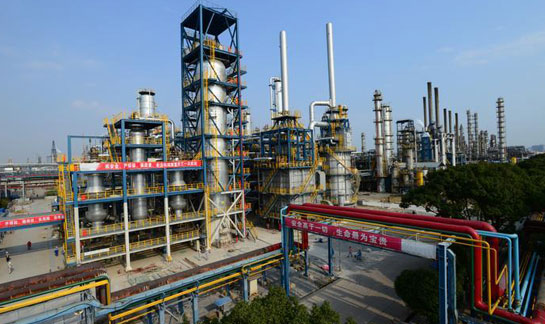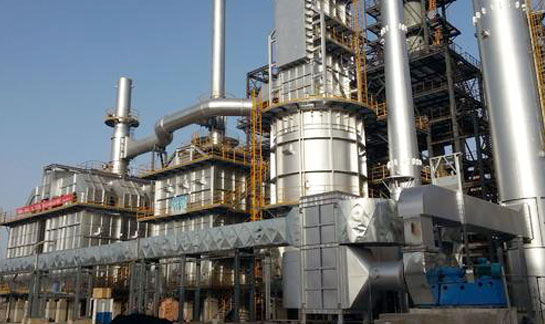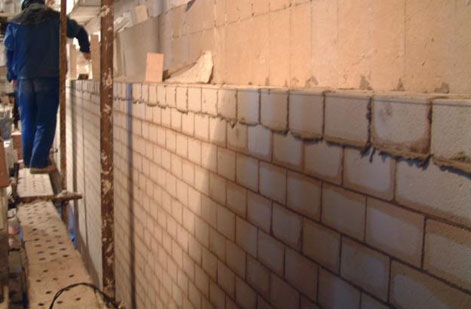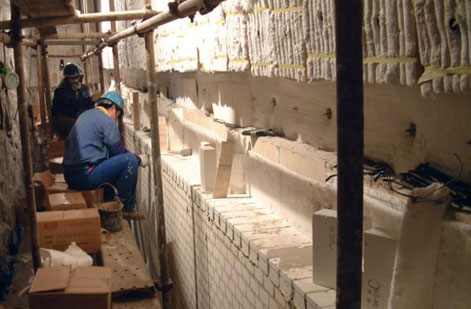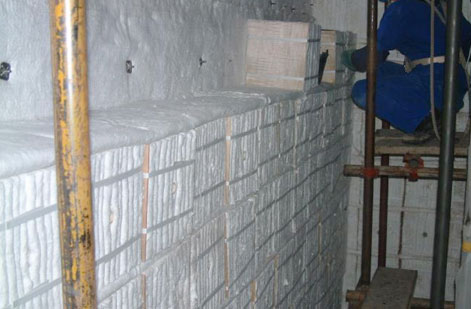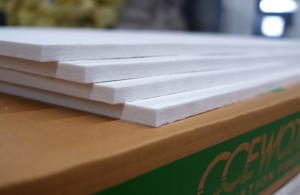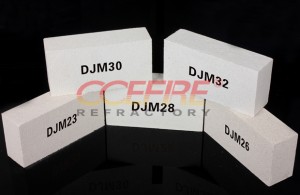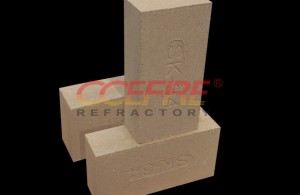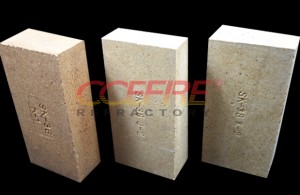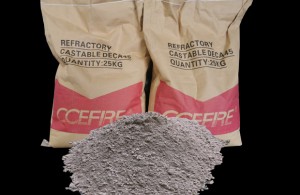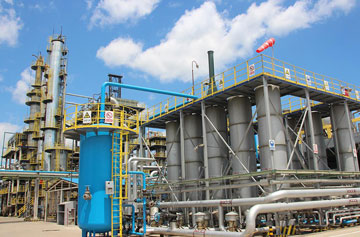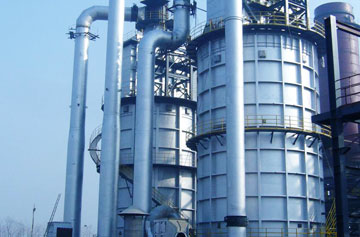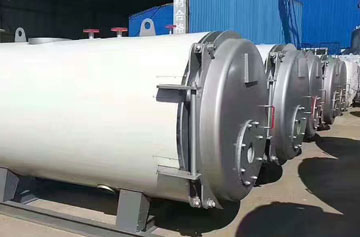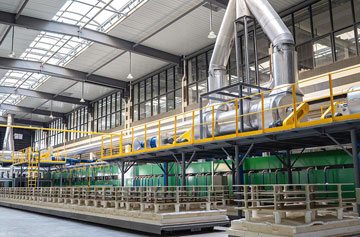Design and construction of hydrogenation furnaces
Overview:
The hydrogenation furnace is a kind of tubular heating furnace, which purifies and refines raw oil by removing its impurities, such as sulfur, oxygen, and nitrogen, and saturating olefin during hydrogenation, through cracking and isomerization reactions at a higher pressure (100-150Kg/Cm2) and temperature (370-430℃). Based on different types of refined raw oil, there are diesel hydrogenation furnaces, residual oil hydrodesulfurization furnaces, gasoline refining hydrogenation furnaces and so on.
The structure of the hydrogenation furnace is similar to that of an ordinary tubular heating furnace, in shapes of either a cylinder or a box. Each furnace is composed of a radiation chamber and a convection chamber. The heat in the radiant chamber is transferred mainly by radiation, and the heat in the convection chamber is transferred mainly by convection. According to the reaction conditions of hydrogenation, cracking, and isomerization, the furnace temperature of the hydrogenation furnace is about 900°C. In view of the above characteristics of the hydrogenation furnace, the fiber lining is generally only used for the walls and the top of the radiant chamber. The convection chamber is generally cast with refractory castable.
Determining lining materials:
Considering the furnace temperature (usually about 900℃) and a weak reducing atmosphere in the hydrogenation furnace as well as our years of design and construction experience and the fact that a large number of burners is generally distributed in the furnace at the top and the bottom and the sides of the wall, the lining material of hydrogenation furnace is determined to include a 1.8-2.5m high CCEFIRE light-brick lining. The remaining parts use CCEWOOL high-aluminum ceramic fiber components as the hot surface material for the lining, and the back lining materials for ceramic fiber components and light bricks use CCEWOOL standard fiber blankets.
A cylindrical furnace:
Based on the structural characteristics of the cylindrical furnace, the light brick part at the bottom of the furnace walls of the radiant chamber should be tiled with CCEWOOL ceramic fiber blankets, and then stacked with CCEFIRE light refractory bricks; the remaining parts can be tiled with two layers of CCEWOOL standard ceramic fiber blankets, and then stacked with high-aluminum ceramic fiber components in a herringbone anchoring structure.
The top of the furnace adopts two layers of CCEWOOL standard ceramic fiber blankets, and then stacked with high-aluminum modules in a single-hole hanging anchor structure as well as folding modules welded to the furnace wall and fixed with screws.
A box furnace:
Based on the structural characteristics of the box furnace, the light brick part at the bottom of the furnace walls of the radiant chamber should be tiled with CCEWOOL ceramic fiber blankets, and then stacked with CCEFIRE lightweight refractory bricks; the rest can be tiled with two layers of CCEWOOL standard ceramic fiber blankets, and then stacked with high-aluminum fiber components in an angle iron anchor structure.
The top of the furnace adopts two tiled layers of CCEWOOL standard ceramic fiber blankets stacked with high-aluminum ceramic fiber modules in a single-hole hanging anchor structure.
These two structural forms of the fiber components are relatively firm in installation and fixing, and the construction is quicker and more convenient. Moreover, they are easy to disassemble and assemble during maintenance. The fiber lining has good integrity, and the heat insulation performance is remarkable.
The form of fiber lining installation arrangement:
According to the characteristics of the anchoring structure of the fiber components, the furnace walls adopt "herringbone" or "angle iron" fiber components, which are arranged in the same direction along the folding direction. The fiber blankets of the same material between different rows are folded into a U shape to compensate for fiber shrinkage.
For the central hole hoisting fiber components installed along the central line to the edge of the cylindrical furnace at the top of the furnace, the "parquet floor" arrangement is adopted; the folding blocks at the edges are fixed by screws welded on the furnace walls. The folding modules expand in the direction towards the furnace walls.
The central hole hoisting fiber components at the top of the box furnace adopt a "parquet floor" arrangement.
Post time: May-10-2021


